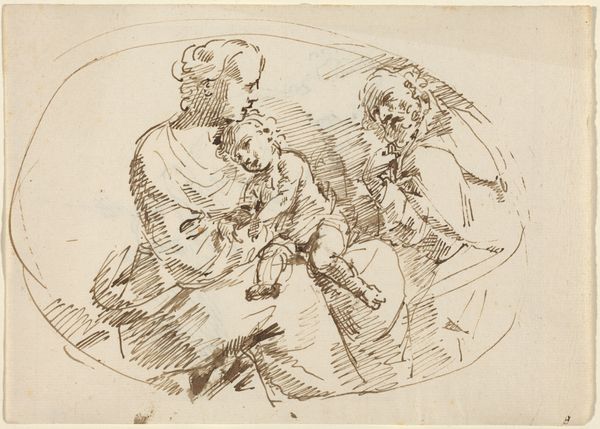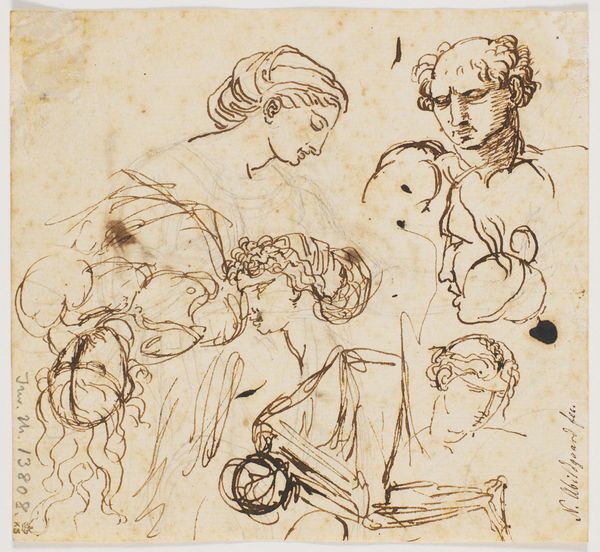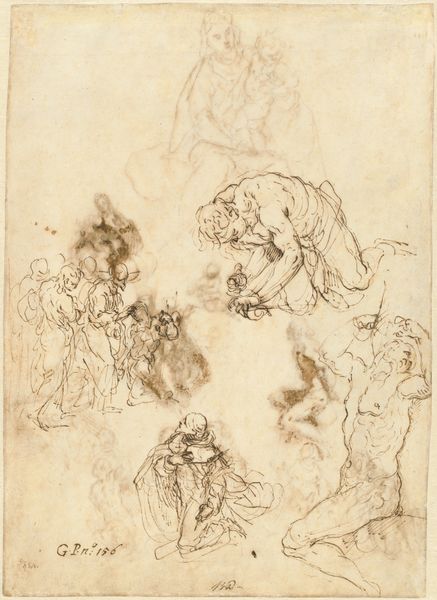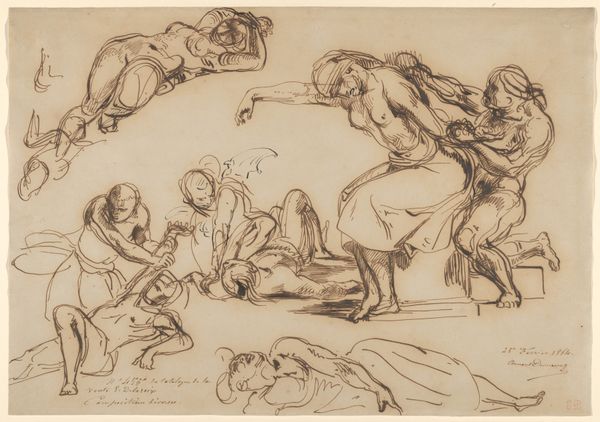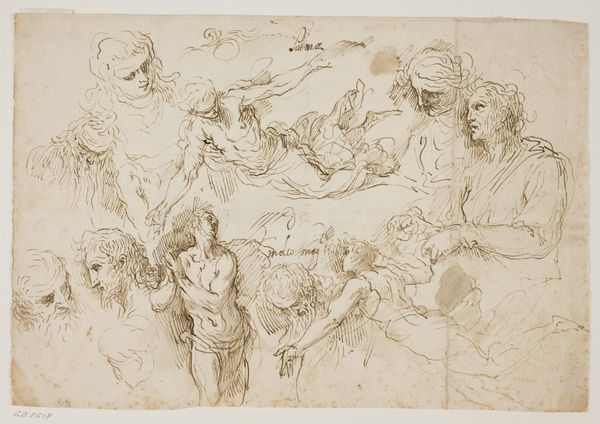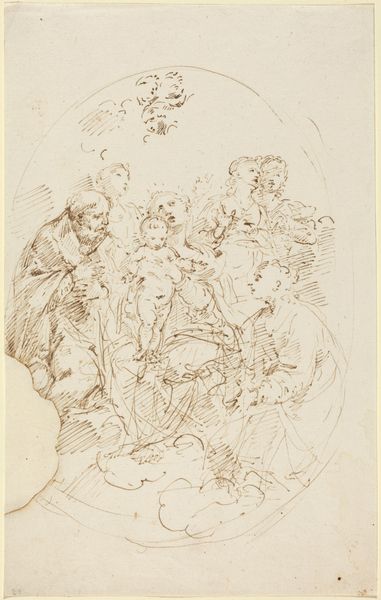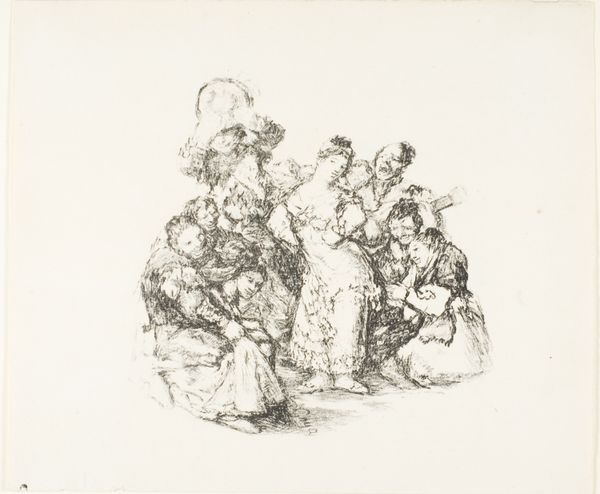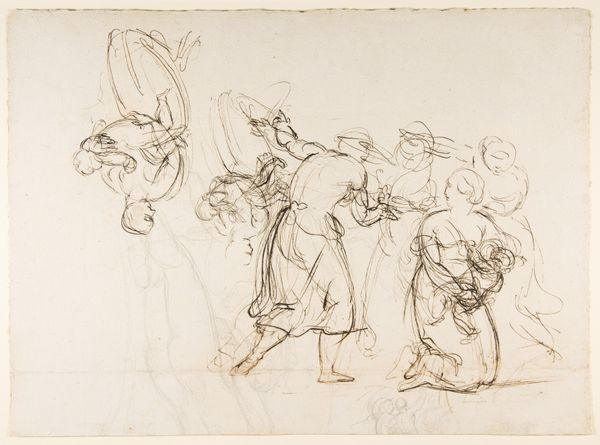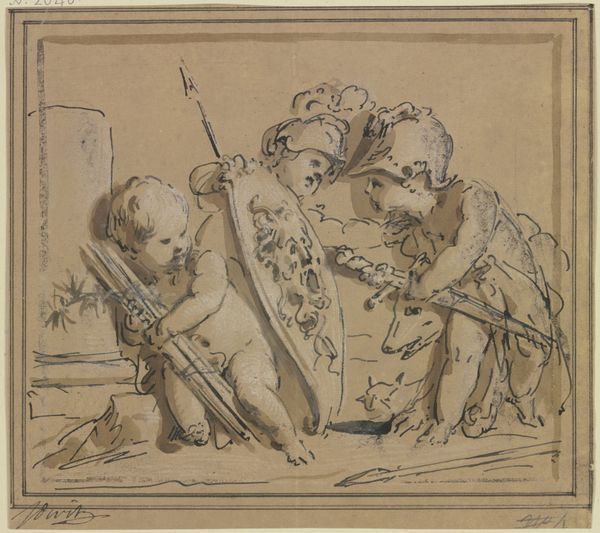
Margaruerite Gerard Reading to Her Mother and Rosalie Fragonard c. 1785
0:00
0:00
Dimensions: 331 × 404 mm
Copyright: Public Domain
Curator: Let's consider "Marguerite Gerard Reading to Her Mother and Rosalie Fragonard," a work from around 1785 currently residing at The Art Institute of Chicago. This piece combines graphite, ink, and chalk on paper. What are your initial impressions? Editor: My eye is immediately drawn to the tonal unity. The limited palette really emphasizes the delicate play of light and shadow, creating an intimate, almost hushed atmosphere. The composition, too, with the figures clustered together, reinforces this feeling of closeness. Curator: Absolutely. Now, think about the social context. Gerard was deeply embedded in the Fragonard household; in fact, she later married Fragonard's cousin. Her access to these intimate family moments, her role as a studio assistant—all this shaped her perspective and the very creation of works like these. What materials were available, who supplied them, how Gerard positioned herself within this economy... Editor: And visually, consider the elegance in the line work, achieved through the combination of graphite, chalk and ink! The curves of the women's dresses, the detailed rendering of the eldest woman's face - notice how the artist uses hatching and cross-hatching to model form and suggest texture. There’s a structural harmony at play, a visual counterpoint between the detailed and the more loosely sketched areas. Curator: Precisely. Moreover, remember that prints were crucial for circulating images in the 18th century. The printmaking industry provided job and profit. By creating this work with graphite, ink, and chalk on paper, which would've then likely served as a study for prints, Gerard participated directly in this booming sector and found autonomy within that landscape. Editor: The expressions captured too; look at the gentle amusement on the faces of the girl and the mother, juxtaposed with the reader's focus. These subtleties evoke the sentimental narrative favored during the Rococo period. It speaks volumes about how she positions women within intellectual and domestic spaces. Curator: In essence, "Marguerite Gerard Reading to Her Mother and Rosalie Fragonard" speaks not just of aesthetic values but also reflects on broader questions about who makes art, for whom, and within what societal and material constraints. Editor: It’s remarkable how a seemingly simple composition opens up avenues for dissecting form, analyzing brushwork, and diving into thematic undercurrents. A complete art history experience.
Comments
No comments
Be the first to comment and join the conversation on the ultimate creative platform.

